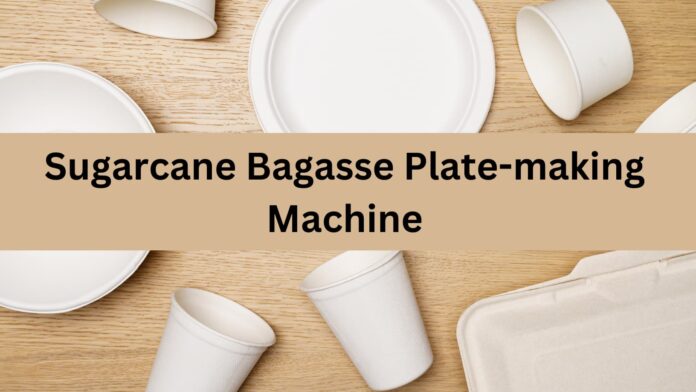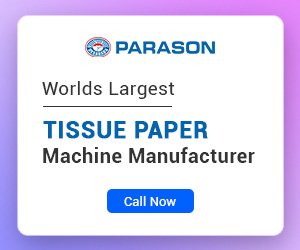Sugarcane Bagasse Plate-Making Machine
Introduction
Sugarcane bagasse is the fibrous remaining of the sugarcane stalks after the extraction of the juice. It is a significant byproduct of the sugar industry. Traditionally it is considered as waste, but now bagasse has been recognized as an efficient raw material for various eco-friendly products. Most notably, the disposable plates and packaging materials. It is an achievement to find a sustainable alternative to plastic.
India’s growing environmental consciousness has spurred the demand for biodegradable and sustainable products. The surge in eco-friendly consumer behavior, coupled with stringent regulations against plastic use, has positioned sugarcane bagasse as a viable solution. This shift is crucial in India’s efforts to combat plastic pollution and promote sustainability.
Introduction to Sugarcane Bagasse Plate-Making Machines
Sugarcane bagasse plate-making machines are molded fiber machines that use specific molds to convert the pulp created from the sugarcane bagasse into plates, bowls, and other products as per the mold design.
These sugarcane bagasse plate-making machines are known as forming machines. They are of various types including, automatic forming machines, semi-automatic forming machines, and robotic forming machines.
Machine Design and Structure
The sugarcane bagasse plate-making machines are designed with precision engineering to handle the unique properties of bagasse. These machines typically consist of feeding systems, forming sections, forming molds, heating elements, and trimming machines. The design must be robust to ensure durability and efficient operation.
Material Input and Output Capacity
The sugarcane bagasse plate-making machine can run in different capacities. The total structure of making sugarcane bagasse plates includes the stock preparation where the raw material is converted into the pulp. The input to the sugarcane bagasse plate-making machine is this pulp made by sugarcane bagasse.
The input and output capacity of the sugarcane bagasse plate-making machine is dependent on the stock preparation and the production goal.
Automation and Control Features
The state-of-the-art sugarcane bagasse plate-making machines are available with various automation and control features. The molded fiber-forming machines are available in automatic, semi-automatic, and robotic variations. You can choose one as per your budget and requirements.
Maintenance Requirements
Any machine requires regular maintenance and the sugarcane bagasse plate-making machines are no exception. The forming machines require regular maintenance and it is advised that the experts needed to be chosen to do the needful audit of the sugarcane bagasse plate-making machines and follow the regular maintenance. This is needed for the long life of the machine and efficient productivity.
Benefits
- Reduction in Plastic Waste
- Sustainable Resource Utilization
- Cost-Effectiveness
- Job Creation in Rural Areas
- Non-Toxic and Safe for Food Use
- Compliance with Health Regulations
Comparative research
Compared to conventional plate methods
Traditional plate manufacturing processes such as plastic and paper manufacturing have a significant environmental impact and resource consumption. In contrast, bagasse plate construction provides a more sustainable and environmentally friendly alternative, with a lower carbon footprint and waste.
Sugarcane Bagasse vs. Other Eco-friendly Material
Bagasse plates compete with other environmentally friendly materials such as bamboo, palm leaf, and corn starch. While each material has its advantages, bagasse stands out for its availability, low cost, and ease of processing, making it a desirable candidate for many applications.
Cost Comparison
Although the initial price of bagasse plates can be higher than plastic and Styrofoam products, the long-term benefits outweigh this cost. Environmental conservation, regulatory compliance, and consumer sustainability contribute to overall cost-effectiveness.
With all the benefits and comparative analysis, the sugarcane bagasse plates stand as an eco-friendly solution and a great alternative to plastic. For more information about the sugarcane bagasse plate-making machines, or to start your own sugarcane bagasse plate manufacturing plant click here.
You can read the detailed information about how to start a sugarcane bagasse tableware manufacturing plant here.
conclusion
Mechanical production of sugarcane bagasse plates represents a major advance in environmentally friendly manufacturing. Their environmental, economic, and health benefits make them a solid alternative to traditional plastic and paper products.
Entrepreneurs and consumers are encouraged to use bagasse plates as part of their commitment to sustainability. Supporting eco-friendly products not only benefits the environment but also creates a greener and healthier future for all future prospects of sugarcane bagasse plate production in India. The future of sugarcane bagasse plate manufacturing in India is bright, with huge growth potential and opportunities for innovation.


